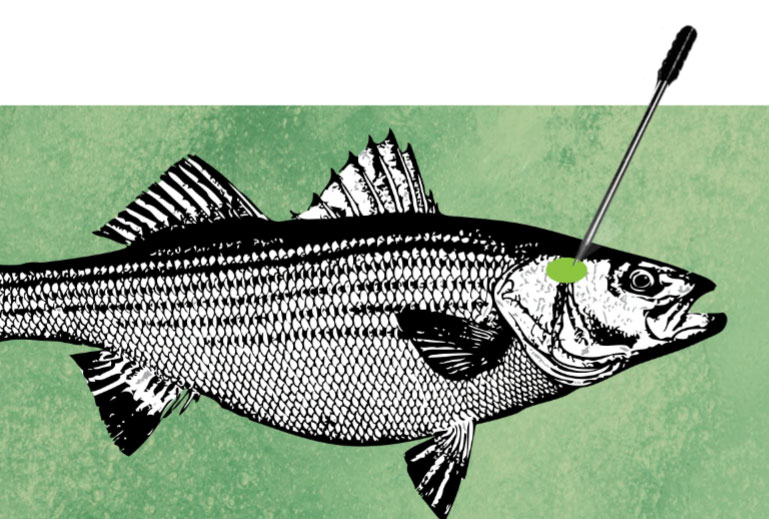Greetings FishTalk readers, I hope your summer has thus far been a blur of bent rods, flying slime, and full coolers. This morning I awoke, took a shower, and while sudsing up discovered an errant scale stuck to my leg. Ah, the little joys in life… That scale came from a speckled sea trout, which I had caught the day before and tossed into the fishbox. But I didn’t just swing open the hatch and slide the fish in, as I had done a thousand times before. Instead, I first practiced Iki Jime.

Just what the heck is Iki Jime? A few months ago, I wouldn’t have had a clue. But in her senior year at St. Mary’s College of Maryland, my daughter Mollie — known to you FishTalkers as our intrepid fishing reports editor — composed a philosophy project delving into the ethics and morals related to recreational fishing. One of the things she learned, which she communicated to me in no uncertain terms (often loudly, vigorously, and with scientific citations) was that fish can feel pain.
For years, I’d been taught that fish didn’t have that capacity. But recent research has shown that fish have nociceptors (neurons detecting harm), and their brains produce opioids. Studies have proved that sticking a pin into a fish stimulates the nociceptors, electrical activity in sections of the brain related to sensory input (not just reflex) can be detected, and opioids are produced in response. In 2013 the American Veterinary Medical Association published new guidelines stating “Suggestions that finfish response to pain merely represents simple reflexes have been refuted.”
I’ve stated before that every time I box a fish, there’s a teensy bit of regret in my heart. Hearing one kick at the hatch can trigger a momentary note of victory, followed by a moment of hope that the fish wasn’t suffering. It’s all a reminder of the cruel dog-eat-dog world we live in. Nature is awesome, and savage. And we’re a part of it. So, if I can do some little things to ease the suffering of another creature, I’ll do them. Hence, Mollie’s recommendation: Iki Jime.
Iki Jime is a Japanese method of quickly and painlessly dispatching a fish you’re going to harvest. In a nutshell, it’s putting a spike through the fish’s brain to kill it instantly. It takes all of 10 seconds to perform with an ice pick, the only real downside being that the fish do tend to bleed a bit more than usual in the box. The tough part is finding the pea-brain inside of those fish on the first attempt; in this regard the website ikijime.com (there’s also an app) proves invaluable, as it allows you to search by species to find pictures showing exactly where to insert the spike to hit the brain.
Many people claim that performing Iki Jime immediately upon landing a fish reduces stress-related metabolic changes in the fish’s meat, and improves its quality on the plate. Some others take Iki Jime even further, running a wire down the fish’s spinal column to eliminate all forms of neural chemical signaling, believing this to further enhance and preserve the fresh flavor of the meat. I haven’t really been able to tell any Iki-difference at the dinner table, nor have I taken the leap to try the spinal column trick, but some people swear by it.
Is this all a bit overboard? Perhaps. In truth the only reason I ordered my Iki-spike and started de-braining my catch was to make my daughter happy. And I still maintain that by removing a predator from the water, I’ve saved the lives of lots of little fish and critters that it might have chomped on in the immediate future. But I’ve discovered that since I no longer hear those fish kicking in the fishbox, I no longer feel that moment of worry about their possible suffering. And maybe it’s silly, but I do feel a little less regret when I slide those post-Iki fish into the box.